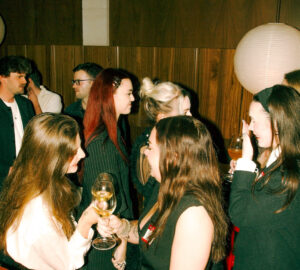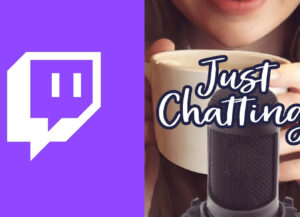In an age of pixelated courtship and algorithmic longing, love in London was starting to look more like a UX problem than a human experience. The apps — Tinder, Bumble, Hinge, Raya, and whatever startup promised “intentional connection” this week — delivered a constant scroll of faces, captions, and swipeable disinterest. For a while, the convenience felt like progress. But something soured. Endless small talk. Ghosting as etiquette. Dates that felt more like interviews than invitations.
Enter Flirt Hard, a bold experiment in analog intimacy. Born in a Soho basement and raised on a diet of dim lighting, curated playlists, and low-intervention wine, Flirt Hard is the brainchild of Meg Rees — a thirty-something former advertising creative who, like many of her peers, got tired of flirting with her phone and not with people. The concept is simple: twenty men, twenty women, a timer, and a vibe. The results? Messy, human, and oddly hopeful.
We met with Rees at her Dalston flat to talk about the surprising resurgence of speed dating in London, what Gen Z and millennials are really looking for, and why, in a city of nine million people, it still takes courage to say hello.
From App Fatigue to Human Chemistry
“It started with a breakup,” Rees says, pouring a tea that smells faintly of cardamom and regret. “I’d been on the apps for years. I met people. Some I even liked. But there was always this… disconnect. Everything felt transactional.”
Rees, like many Londoners, noticed a growing fatigue. Friends around her were logging off the apps, not because they found someone, but because they were tired of looking. “You swipe, match, and then nothing. Or worse, you go on a date, and it’s clear neither of you even want to be there. It’s soul-crushing.”
That feeling gave birth to Flirt Hard. The name came first — a semi-ironic nod to the awkward vulnerability of trying — and the format came later. She booked a back room at a natural wine bar in Soho, invited forty friends and acquaintances, and told them to show up dressed “like you might run into your ex.” The idea was cheeky but sincere: flirt like it matters, because it just might.
The Rules of Engagement
A typical Flirt Hard event is low-tech but highly choreographed. Participants sign up in advance and answer a few pre-event questions — what kind of music they like, their ideal Saturday, their favorite breakup movie. On the night, they’re welcomed with a glass of orange wine or pet-nat, a name tag, and a little black booklet to jot notes in. There’s a DJ, dim lighting, and enough ambient noise to feel like a party, but not so much that you have to shout.
Each speed-date lasts seven minutes. The organizers play matchmaker in subtle ways, often seating people who share overlapping interests or surprising opposites. Between rounds, there’s a two-minute breather. “We want people to breathe, reset, reflect. It’s not just a marathon,” Rees says.
And there are rules: no phones. No swapping socials during the event. And crucially — no feedback forms or AI-generated matches. After the event, if two people both express interest, Rees’s team sends a discreet email introduction. That’s it. No stats. No profiles. No data trail.
Why It Works
It would be easy to dismiss Flirt Hard as a niche throwback — a novelty for hopeless romantics and overworked ad agency escapees. But the demand tells another story. Every event sells out within hours. The waitlist has hundreds. And now, Rees is fielding offers to bring the concept to Paris, Berlin, and New York.
So why is it working?
“Because people want permission to care again,” Rees says. “Apps made us lazy and cynical. We started believing that love should be convenient. But it’s not. It’s awkward. It’s exposing. And it’s so much better in person.”
She’s not wrong. At Flirt Hard, attraction is about more than filtered photos and curated bios. It’s voice, timing, eye contact, a shared laugh over something weird. One attendee described it as “like being 22 again, but smarter.” Another said, “I remembered what it feels like to be noticed — not judged.”
The stakes are low but the impact is high. Even if you don’t meet the love of your life, you’ve practiced connecting. You’ve looked up instead of down.
The Rise of Anti-Algorithm Dating
Flirt Hard isn’t alone. Across London, a quiet rebellion against algorithmic romance is brewing. Events like Love in the Wild (a nature walk for singles), Heardat (a voice-only blind dating podcast), and Offline Crush (a hand-written message booth at House of KOKO) are rewriting the social script.
These platforms have little in common in format but share a core belief: that dating should be felt, not filtered. They are intimate, analog, and rooted in presence. They cater not just to sexual chemistry but to curiosity, attention, and generosity — things often lost in swipes and DMs.
Psychologists call it “experiential dating.” The idea is simple: when people connect through a shared experience, not just shared desire, bonds form more easily. “We remember how someone made us feel, not what their bio said,” Rees notes.
Diversity, Identity, and the Ethics of Curation
Flirt Hard has faced its share of growing pains. In early iterations, it skewed heavily toward white, straight, and East London creative types. But Rees has since worked to diversify the room — hosting queer editions, themed nights, and collaborations with cultural partners like gal-dem and BBZ.
“Curating the guest list isn’t about exclusivity. It’s about intentionality,” she explains. “We want people to feel safe and seen, whatever their identity or background. That means listening, learning, and adjusting — always.”
There’s also the question of what it means to monetize desire. With ticket prices ranging from £25–35, some critics have called Flirt Hard a boutique solution for a systemic problem. Rees doesn’t disagree. “We’re not pretending to fix modern dating. But we’re trying to offer a space where people can remember what it’s supposed to feel like. That’s worth something.”
The Art of the Flirt
Rees is quick to point out that Flirt Hard isn’t about getting everyone paired off by midnight. In fact, she celebrates the idea of flirtation as its own reward. “We’ve forgotten how to flirt. We’re so outcome-driven. Flirting is about joy. It’s about play.”
The events encourage a kind of performative charm that’s been exiled from dating culture — compliments without agenda, eye contact without calculation, questions without ulterior motive. “It’s not about seduction. It’s about sincerity. Can you be yourself, or at least the best version of yourself, for seven minutes?”
The night often ends not in hookups, but in group hangs, new friendships, and sometimes quiet solo walks home under city lights. “I love the idea,” Rees says, “that people leave feeling fuller, even if they’re still alone.”
Love in a Tired City
London has always been a romantic paradox — thrilling but exhausting, full but lonely. The Tube is a crush of strangers. The bars are loud. The parks are serene but transient. Everyone is busy. Everyone is looking. But no one knows where to look.
Flirt Hard doesn’t pretend to be a solution, but rather a salve. It offers pause. It offers possibility. And in that liminal space between the third and fourth glass of wine, between strangers sitting close enough to hear each other breathe, something tender happens: people remember they still want to be known.
Rees smiles when she recalls a couple from the third event who just moved in together. “They were both nervous wrecks. She almost didn’t come. He spilled wine on himself before the first round. And now? They’re building bookshelves together. That’s the dream.”
Looking Ahead
With demand growing, Flirt Hard is scaling carefully. More events are on the calendar, including sober nights, over-40s editions, and even a soft-launch in Manchester. But Rees is wary of overexposure.
“This only works because it’s human-sized. You lose that, you lose everything.”
Still, she’s hopeful. Not just for the future of Flirt Hard, but for dating as a whole. “There’s something in the air. People are waking up from the trance. They’re hungry for real connection. For courage. For messiness. That’s what love asks of us.”
And if you’re wondering whether Rees herself has found love? She laughs. “I’ve found flirtation. I’ve found hope. The rest? I’m still looking.”
The New Romance Renaissance
In a culture increasingly obsessed with optimization, Flirt Hard is a reminder that romance doesn’t need an update — it needs a revival. That it’s okay to try too hard, laugh too loud, and be too earnest. That connection isn’t a product to be delivered, but a dance to be risked.
In dimly lit corners of London, against a backdrop of wine, music, and nervous laughter, people are rediscovering the thrill of showing up. Face to face. Heart to heart. One seven-minute miracle at a time.
It turns out that the most radical thing you can do in 2025 isn’t deleting the apps — it’s choosing to be seen. And maybe, just maybe, flirting like you mean it.
No comments yet.









